MB&F’s Latest Horological Machine, the New HM11 Architect
It's like a 4-room, late-1960s house, but made for the wrist and with a tourbillon in the lobby.

Looking back at the entire collection of Horological Machines by Max Büsser and Friends, there is no denying the extreme audacity of the designs. Inspirations are eclectic and highly original, from vintage supercars to jetfighter engines, jellyfish to spaceships, a panda, a frog, a bulldog and even something that I’ll leave to your own imagination… For his latest creation, Max has been looking in a different direction, with a watch that he said has been inspired by architecture, as if this watch was the house he always wanted for himself. The result, named the MB&F HM11 Architect, is yet another horological UFO, something undeniable that still, for intangible reasons, feels highly attractive and is also one of the most wearable HM watches ever created (and looking at previous ones, it’s not anecdotical).
What if that house was a watch? That was the question that Max Büsser had when he got interested in 1960s architecture and the so-called humanist trend. A reaction to post-war buildings with pragmatic, rectilinear forms hastily erected to fulfil a purpose, some architects decided to bring a design that would be centred around the human body and the spherical scope of vision perceived by the human eye. The HM11 Architect is shaped like a house with four rooms and a central lobby, but it isn’t meant to be lived in but to be worn on the wrist.
How does this inspiration transform into a watch? Without seeing the watch, it would be quite a task to imagine the shape. Now, we have the watch in photos and the inspiration has been transported into a highly complex rotating case composed of four pods and a central core, with the beating heart of the watch, its brain and pulse positioned right in the middle. The central lobby is like a junction of corridors, distributing power and functions to the four rooms, each with its own function. A sapphire crystal dome serves as a roof while cones of titanium act like walls for the pods, each open to the world with a lateral window. In more factual words, the HM11 Architect is a surprisingly round watch – something not common in the HM collection – with a diameter of “only” 42mm. The height, dictated by the architecture of the movement and its lateral pods, is 23mm, but the overall shape makes the HM11 the most comfy watch of the collection, also due to the curved case feet that are also the strap attachment points.
Another surprising element… The entire case rotates 360 degrees, meaning that any of the indications can be positioned in front of you. But that’s also because the winding of the movement is done by rotating the whole case clockwise. What about these four lateral elements? The first one is obvious, it’s the crown to set the time. The time room, which will most of the time face the wearer, indicates the hours and minutes, with rod-mounted orbs serving as hour markers, using larger and lighter polished aluminium orbs for each quarter and smaller and darker polished titanium orbs for the rest. Red-tipped arrows point to the hours and minutes.
The next room, 90 degrees to the left, is dedicated to the power reserve, again with rod-mounted orbs and a red-tipped arrow. The following pod is home to an indication rarely seen in horology, as the HM11 Architect features a mechanical thermometer (well, that’s something you’ll find in your home). This mechanical system functions without any external energy input and is available in Celsius or Fahrenheit display variations. All peripheral rooms are surrounded by exterior walls of polished grade-5 titanium, and the central atrium, with a flying tourbillon in the middle, is open to natural light with its sapphire crystal. The crown, with a large 10mm diameter, is also made of sapphire and allows an unimpeded view directly into the movement. One of the challenges with the HM11 was water resistance, and even though rated to 20m, it necessitates no fewer than 19 complexly shaped gaskets.
About the engine, there’s nothing really conventional here either. The movement has been developed in-house and designed as an integral part of the watch, as always with the MB&F HM collection. First, it’s a manual movement that is wound by rotating the case (10 times, clockwise). The barrel, positioned low in the movement, is large enough to store 96 hours of energy. Then, the movement is shaped like an X, with the flying tourbillon (one-minute, 2.5Hz) beating in the middle and distributing its pace to the time indication. The movement incorporates a full-system dampener consisting of four high-tension suspension springs that sit between the movement and the lower-case shell. This movement is available either blue PVD-coated or gold PVD-coated.
Worn on a rubber strap – white for the blue model and khaki green for the red gold model – closed by a titanium tang buckle, the MB&F HM11 Architect is a limited edition of 25 pieces per colour. It is priced at EUR 207,000, CHF 198,000 or USD 230,000 (all prices excl. taxes).
For more details, www.mbandf.com.



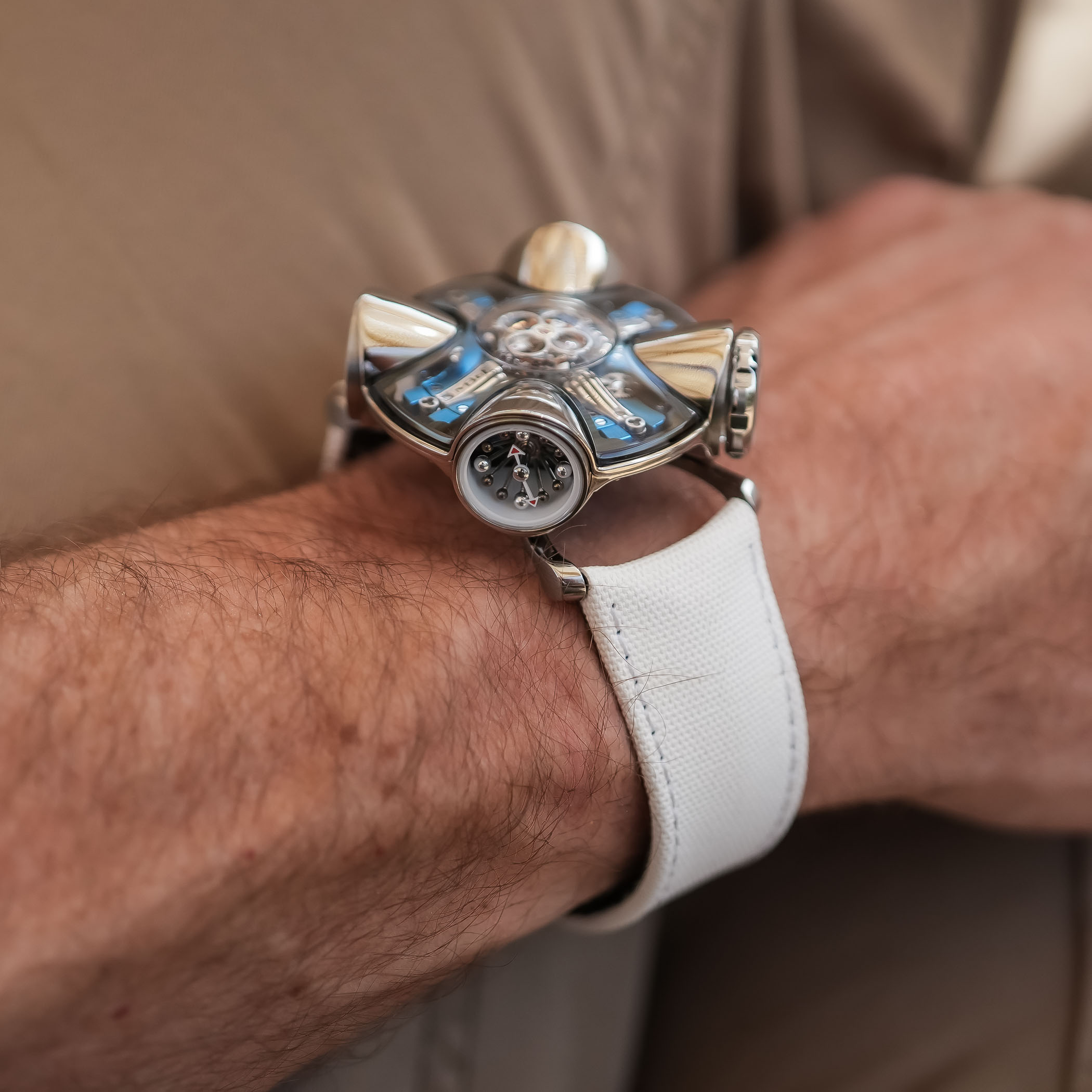



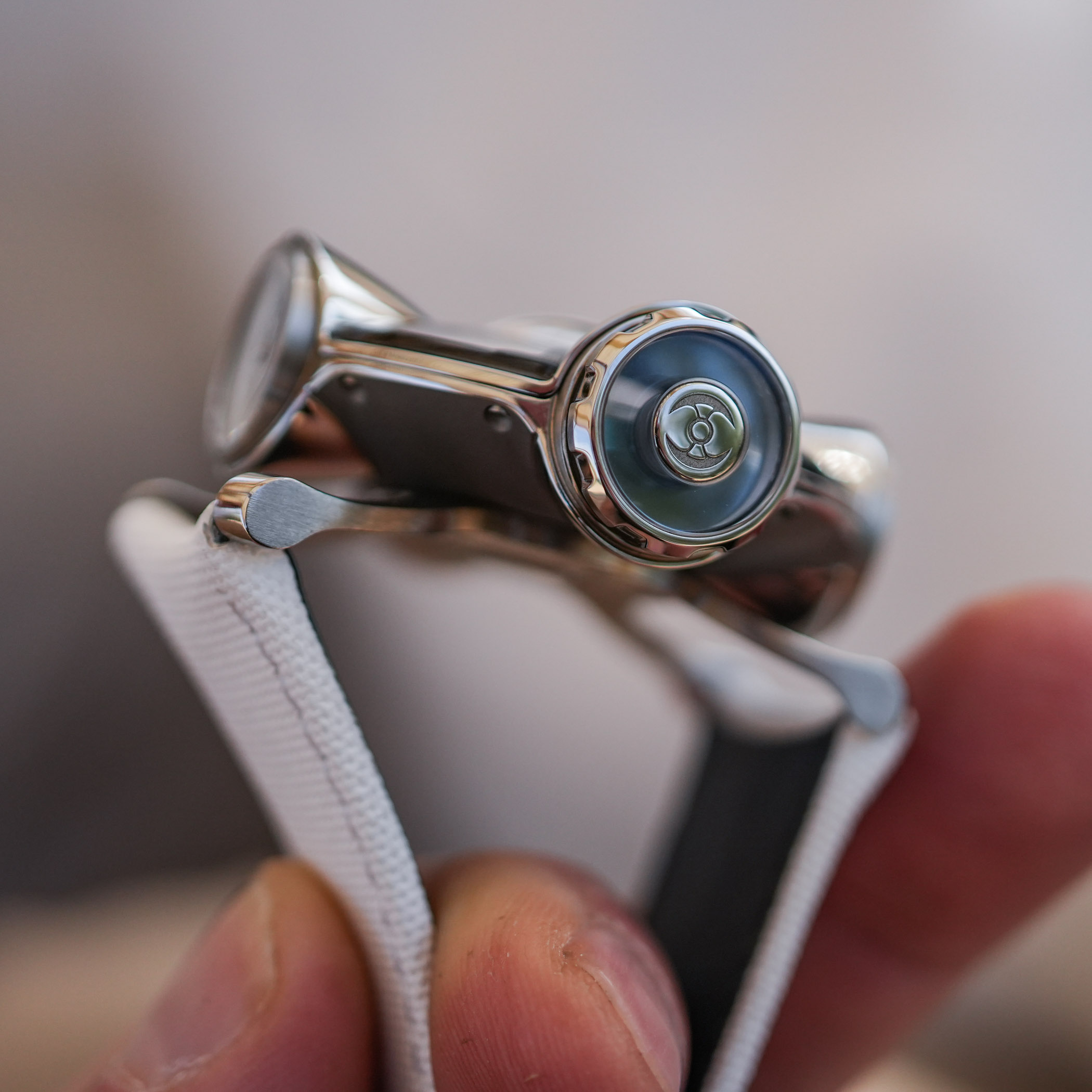
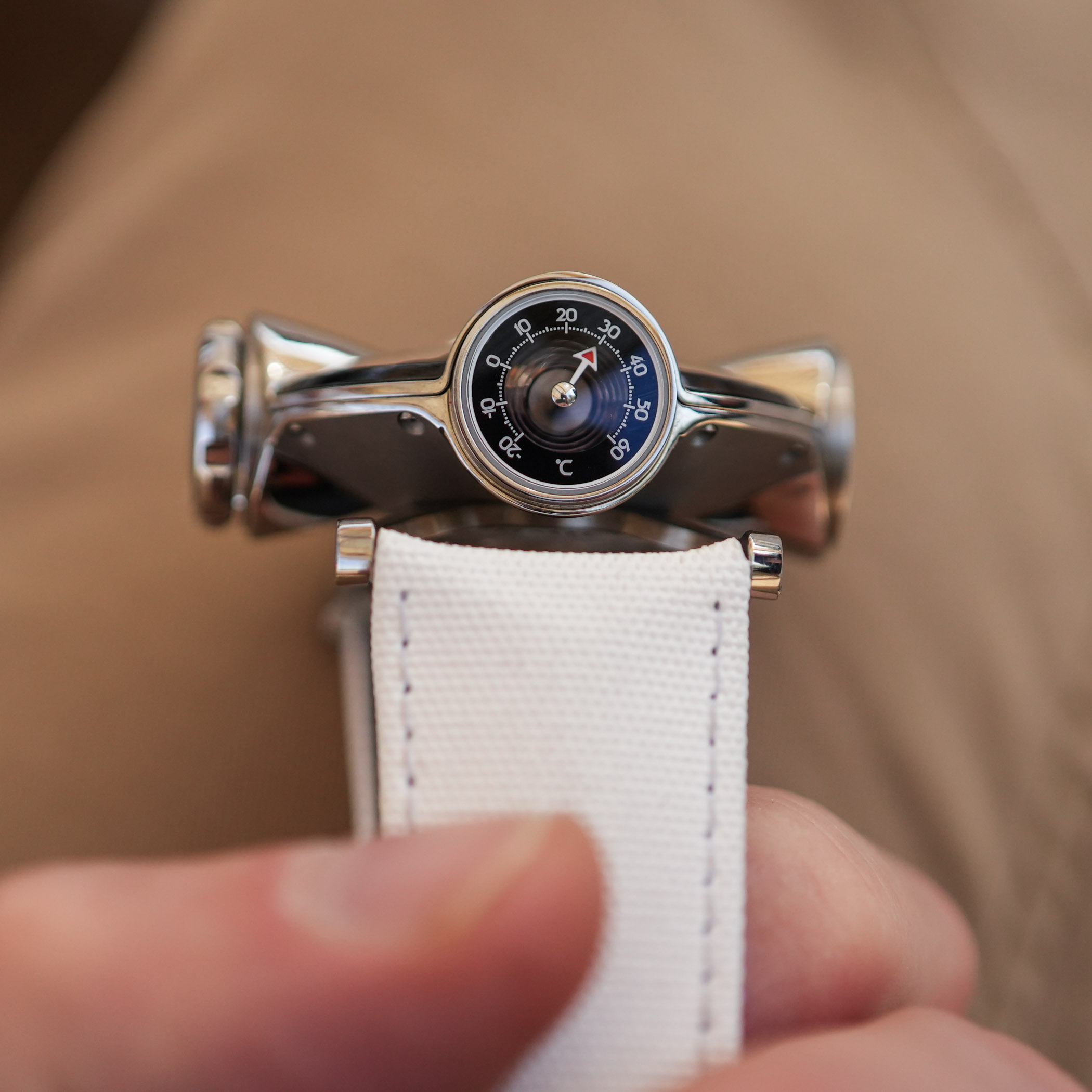

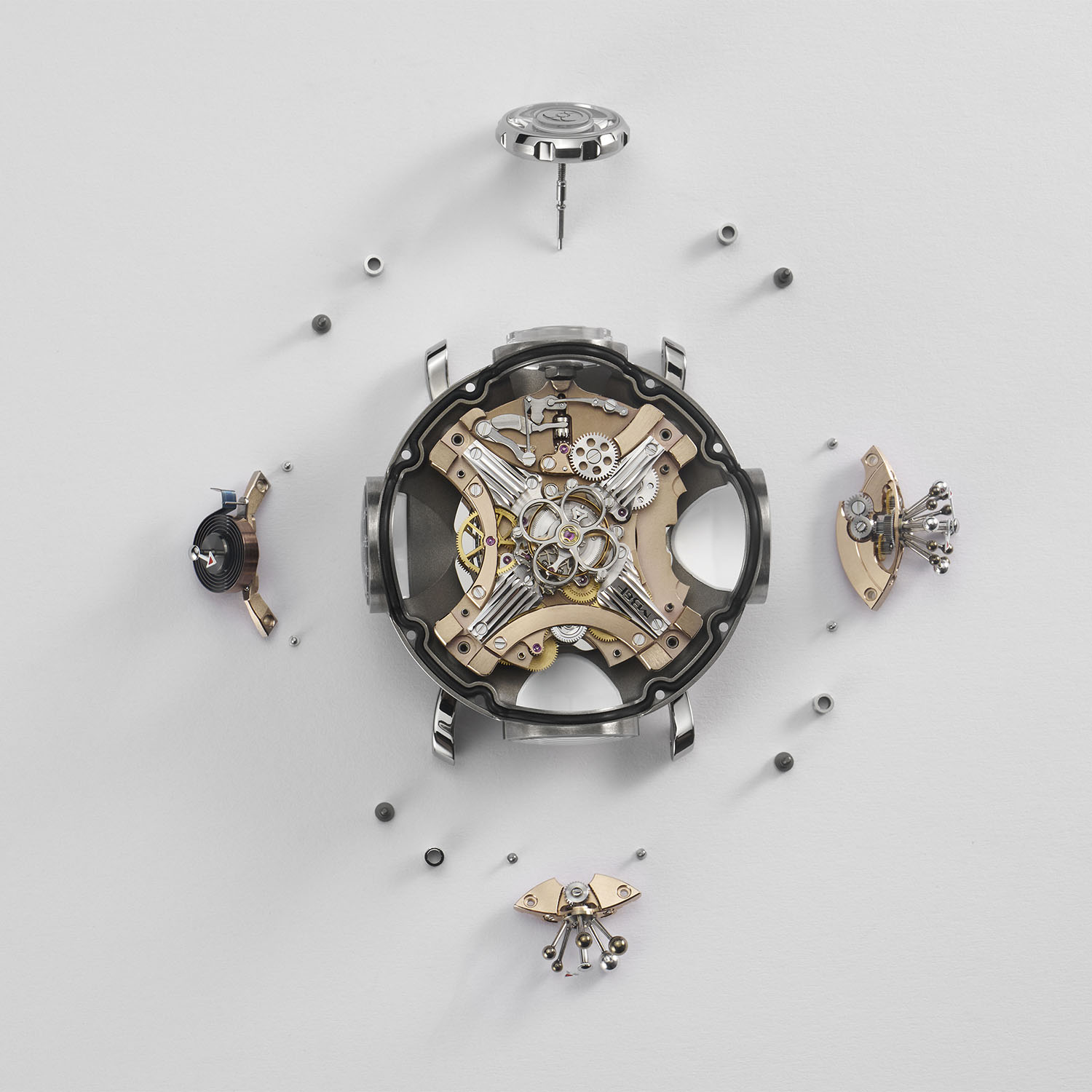
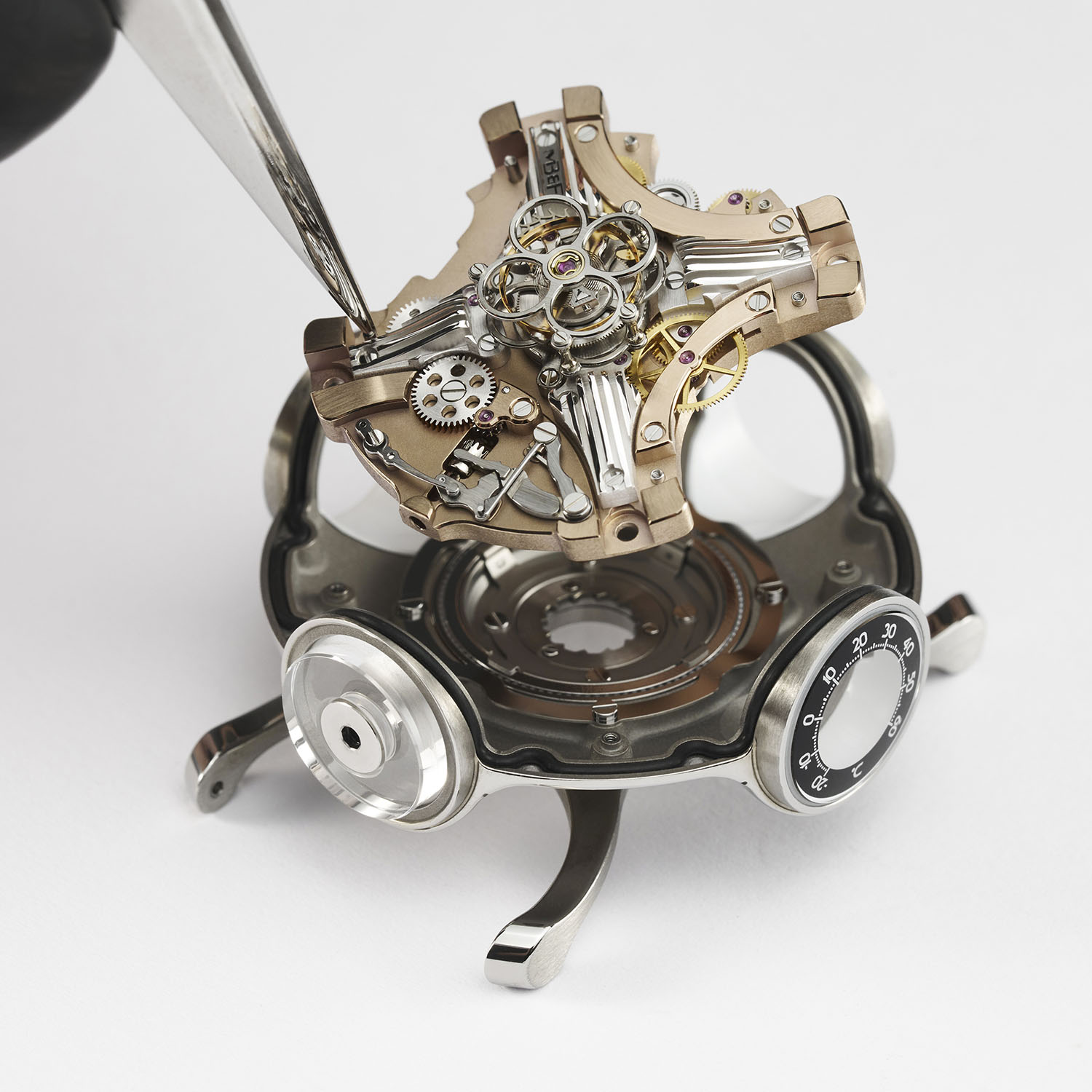





3 responses
That thing fell off the ugly tree and really hit every branch on the way down.
Yikes – someone has had a mid-life crisis.
The names of all 25 people that purchase this thing should really be made public.